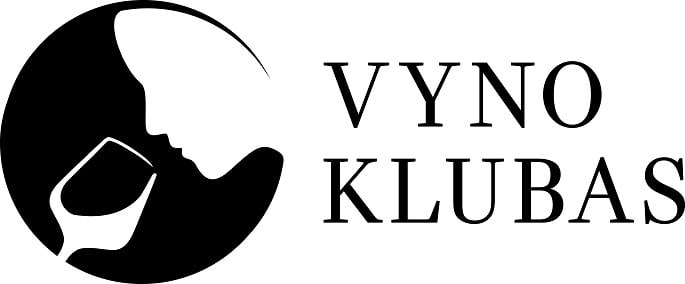Dominykas Sidorovas: "Metonymy"
Morse code is the metaphor that Dominykas Sidorovas usually invokes to describe his work or, more precisely, creative method. It consists of individual sounds which signify letters. These sounds form words, sentences, paragraphs, and somewhere in a distant (time-wise) corner of a shelf, eventually even an entire novel. Using the same approach, the artist creates paintings which are like discrete sounds that carry meaning.
Motif comes in the form of an object and it is the object that is at the center of his creative works. The painter traces the signs of his surrounding environment, using its basic objects, their shapes, and chromatic codes as the point of departure. He constructs the signs as well as their combinations. Through abstracted marking, Sidorovas looks for interrelations and the underlying meanings. Yet the primary element of the whole is the creation of the presumption of the meaning of the objects. The narrative is not so crucial in the general picture. More important is the fact that it possibly exists there. Perhaps in- between signs, motifs and states.
Maecenas
Živilė and Jonas Garbaravičius
Patron
Renata and Rolandas Valiūnas
Exhibition supported by
Ministry of Culture of the Republic of Lithuania, Lithuanian Council for Culture, Clear Channel
Gallery supported by
Plieno Spektras, Art Fund, Vilma Dagilienė, Romas Kinka, Lietuvos Rytas, Ekskomisarų biuras, Vilnius City Municipality
Media sponsor
LRT
Graphic design
Laura Grigaliūnaitė
Dominykas Sidorovas
"Metonymy"
05 09 2019 – 11 10 2019
Metonymy [from Greek metōnymía – a change of name], a figure of speech which involves replacing one concept with another on the basis of the objects signified by those concepts being fundamentally related as part and whole, cause and effect, inside and outside, agent and result, site and event, etc.
Morse code is the metaphor that Dominykas Sidorovas usually invokes to describe his work or, more precisely, creative method. It consists of individual sounds which signify letters. These sounds form words, sentences, paragraphs, and somewhere in a distant (time-wise) corner of a shelf, eventually even an entire novel. Using the same approach, the artist creates paintings which are like discrete sounds that carry meaning.
Motif comes in the form of an object and it is the object that is at the center of his creative works. The painter traces the signs of his surrounding environment, using its basic objects, their shapes, and chromatic codes as the point of departure. He constructs the signs as well as their combinations. Through abstracted marking, Sidorovas looks for interrelations and the underlying meanings. Yet the primary element of the whole is the creation of the presumption of the meaning of the objects. The narrative is not so crucial in the general picture. More important is the fact that it possibly exists there. Perhaps in- between signs, motifs and states.
Motif choice is directly related to object collection. This is how a set of bed boards and a foam mattress ended up in Sidorovas’ studio a few years ago. When the collector nailed the foam to the wall, it turned out the material absorbed the sound heavily. The process resembled a sound recording studio. The metaphor of a similar painting method eventually influenced the artist directly and completely nonmetaphorically. Or, at least, not only metaphorically.
Morse code-based compositions eventually appeared to the artist too noisy and oversaturated with meanings, or simply not clean and clear enough. Sound-absorbing elements purified the loud environment and only a part of the story, a part of the sound reached the listener and, in this case, the author as well. The suspended meaning and object links remain somewhere behind the foam. The image is constructed from what is left after one rejects the bustle, excess, and everything that obscures the essential form. Now only snippets and residues settle down on the canvas. These fragments are exhibited in Dominykas Sidorovas’s solo show. Parts which may possibly help decode the possible whole. Is it painting of saws and antlers? A canister-like author, hiding behind bright, colourful camouflage?
Metonymy seems to be the action itself or its consequence here. Predicting the whole script from a small fraction.
Minimal fragments are signs of objects. Markers of the immediate environment whose simple poetry Dominykas translates into painting. The ambiguous meaning of the form of the objects and the intrigue behind it. An antidote to boring daily routine often mentioned by the artist. Joy and amazement in everyday, inconspicuous, simple and even inferior things.
My guess is that in his still-life like paintings the artist is solving his own existence rather than problems of object representation. He is not concerned (or less concerned) with an object’s historical connotation or social issues. Through things, Dominykas Sidorovas speaks about himself, his trajectories, his emotional states and feelings, his occasionally somewhat tactile poetry.
Manifestations of our environment’s manifold meanings and oddities in the author’s current series of works increasingly frighten me. It resembles laughing while doing something nasty in a colourful lavish interior. Repeatedly.
Meanwhile, the soft yet heavy big foam curtain ends the show of circular saws.
Me and him are in a room with sound-cancelling walls. The painter’s shouting is difficult to hear:
‘Marius, everything is simpler than you think! Everything is much closer.’
Author of the text:
Marius Vabalas



























